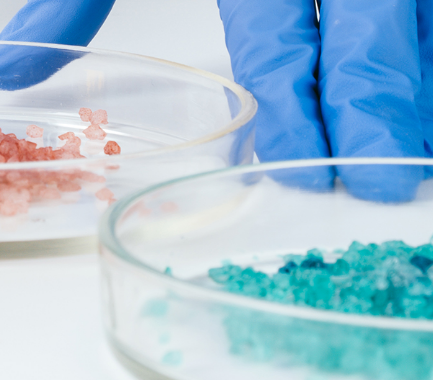Your contact
PENPET-Team - Hamburg

Jan Prager
Sales
Tel. +49 (0) 40 - 675 7 99 10
sales@penpet.de
Get in touch with us.
Benzoic acid
Benzoic acid belongs to the group of aromatic carboxylic acids. It is the starting material for the production of numerous chemical products in the food industry, the perfume industry and the plastics industry. The compound is produced industrially by a gas-phase oxidation of toluene using vanadium pentoxide and other substances as catalysts. In addition, there are laboratory processes for obtaining benzoic acid from bromobenzene, benzene or sodium benzoate. Benzoic acid occurs naturally in fruits, dairy products, honey and the benzoin resin from the Southeast Asian storax tree family that gives it its name.
Due to the wide range of possible uses of the different benzoic acid esters, the compound is of great importance as a raw material for the chemical industry. The esters are used, for example, as fragrances, pesticides, anesthetics for local anesthesia, and plasticizers for plastics. In addition, benzoic acid is used as a preservative for food, as a feed additive in animal husbandry, as a component of cosmetic products and as a corrosion inhibitor. The substance inhibits the growth of bacteria and fungal cultures and is used, among other things, to treat skin fungi. Benzoic acid is used as a precursor for the production of phenol and other organic compounds as well as epoxy, alkyd and phenolic resins.
At PENPET you can easily and reliably order the required amount of benzoic acid. We look forward to receiving your inquiry for an individual offer. Delivered as a solid.
CAS no. 65-85-0
EINECS no. 200-618-2
Molecular formula: C7H6O2
Synonyms: BES, benzene carboxylic acid, benzene carboxylic acid, benzene formic acid, carboxy benzene, phenyl methanoic acid, monophenyl methanoic acid, phenyl formic acid, phenyl carboxylic acid, E 210
Areas of application: Used as a preservative, feed additive or in cosmetic products, manufacture of benzoic acid esters for use as pesticides, fragrances, anesthetics or emollients
More Information
Benzoic acid is an aromatic carboxylic acid. It consists of a phenyl radical with six ring-shaped carbon atoms and a carboxy group. Although it has unsaturated compounds within the phenyl ring, it does not tend towards addition reactions due to the high stability of this structure.
The reactivity of benzoic acid originates predominantly from the carboxylic acid functional group. The compound is therefore suitable for esterification to form more complex structures. Here, benzoic acid reacts with various alcohols with elimination of water. Hydrogen atoms of the phenyl radical can be replaced by cationic compounds in the course of electrophilic aromatic substitution. The formation of other substances from benzoic acid is also possible in this way.
Benzoic acid is a white solid in the form of needle-shaped crystals, shiny flakes, or granules. The compound goes directly into the gas phase when heated to temperatures above 100 °C. The substance has a slight but typical smell.
Benzoic acid is poorly soluble in water, with solubility increasing as the temperature rises. However, the compound is readily soluble in organic solvents such as methanol, acetone, hexane, diethyl ether, toluene, chloroform and ethanol.
Benzoic acid reacts with strong oxidizing agents, strong bases and reducing agents as well as nitrites, generating a lot of heat. In contact with metals, the compound forms hazardous gases such as explosive hydrogen. Dangerous vapors and gases are also formed with ammonia.
Benzoic acid is flammable, but not explosive in its pure form. However, heating above the flash point can result in an explosive atmosphere. At temperatures above 370 °C, benzoic acid gradually dissolves into carbon dioxide and benzene. This also produces other gases, some of which are hazardous to health, such as carbon monoxide and phenol.
Benzoic acid vapors are heavier than air and may collect or spread on the ground unnoticed. Since they can form explosive dust-air mixtures with the ambient air, the substance must be kept away from sources of ignition such as open flames, welding sparks and electrical devices. Dust deposits and dust turbulence are to be avoided. Benzoic acid attacks iron, steel and lead. This must be taken into account when storing.
Benzoic acid is a hazardous substance that is hazardous to the skin. The compound causes skin irritation and can cause severe eye burns and loss of vision. After direct contact, skin and eyes should be rinsed thoroughly and medical care sought. Accidental ingestion of benzoic acid can cause abdominal pain, gastrointestinal discomfort, nausea, allergic reactions, and other health problems. After swallowing, the mouth should be rinsed thoroughly and then water should be drunk. Avoid breathing dust and fumes from benzoic acid. With repeated or prolonged inhalation, the compound can damage the lungs and cause asthma-like symptoms.
